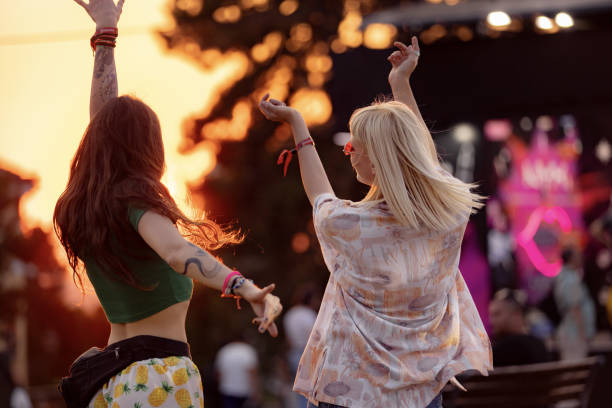Sonic Solidarity: The Rise of Intergenerational Music Festivals
Introduction: In an era of digital divides and generational gaps, a new cultural phenomenon is bridging the years through the universal language of music. Intergenerational music festivals are reshaping social bonds, challenging age-old stereotypes, and fostering unprecedented unity across age groups. Read below to explore this harmonious revolution in social connection.

The roots of this phenomenon can be traced back to the 1960s and 1970s, when music became a powerful tool for social change and self-expression. As the youth of that era aged, they retained their passion for music, passing it down to their children and grandchildren. This musical legacy, combined with the internet’s democratization of access to diverse genres, set the stage for a more inclusive musical landscape.
Breaking Age Barriers Through Beats
Intergenerational music festivals are redefining the festival experience. Unlike traditional events that cater to specific age groups or musical tastes, these festivals curate lineups that span decades of musical evolution. From classic rock to contemporary pop, from jazz to electronic dance music, these events offer a sonic smorgasbord that appeals to multiple generations.
The impact of this diversity goes beyond mere entertainment. Sociological studies have shown that shared musical experiences can foster empathy and understanding between different age groups. Dr. Sarah Thompson, a cultural anthropologist, notes, “When people of different ages dance to the same rhythm or sing the same lyrics, it creates a powerful sense of connection that transcends generational divides.”
The Social Alchemy of Shared Experiences
These festivals are more than just concerts; they’re social laboratories where stereotypes are challenged and new connections are forged. Younger attendees report gaining new perspectives on aging and life experiences, while older participants often describe feeling rejuvenated and more connected to contemporary culture.
The festival environment encourages interactions that might not occur in everyday life. Grandparents and grandchildren can be seen dancing side by side, while middle-aged parents and their teenage children discover shared musical interests. These interactions create lasting memories and often lead to improved family dynamics long after the festival ends.
Cultural Impact and Societal Shifts
The rise of intergenerational music festivals reflects broader societal trends towards age inclusivity and the breaking down of traditional life-stage boundaries. As life expectancy increases and career paths become more fluid, the notion of age-appropriate behavior is evolving.
These festivals are at the forefront of challenging ageism in the entertainment industry and society at large. By showcasing artists from multiple generations performing together, they demonstrate that talent and creativity are not limited by age. This representation has a ripple effect, influencing media portrayals and public perceptions of different age groups.
Challenges and Future Prospects
While the concept of intergenerational music festivals is gaining traction, it’s not without challenges. Organizers must navigate diverse needs and preferences, from accessibility issues for older attendees to ensuring a safe environment for younger participants. Balancing musical lineups to appeal to varied tastes without diluting the festival’s identity is another ongoing challenge.
Despite these hurdles, the future looks promising. Market research indicates a growing demand for age-inclusive entertainment experiences. Festival organizers are innovating, incorporating technology to enhance accessibility and creating spaces that cater to different energy levels and preferences.
As society continues to grapple with issues of division and disconnection, intergenerational music festivals offer a model of unity and shared joy. They remind us that music, in its purest form, knows no age limits. In the rhythm and melody of these events, we find not just entertainment, but a blueprint for a more cohesive, understanding society.





